How can Chronograph Watches help optimize your time? - Sylvi's Insights

Chronograph watches are not just stylish accessories but also valuable tools for optimizing your timekeeping. This blog post will explore how chronograph watches can help you manage your time effectively and efficiently. Whether you're an athlete, a professional, or simply someone who values punctuality, a chronograph watch can be a game-changer in keeping track of your day. Let's delve into the world of chronograph watches and discover how they can enhance your time management skills.
A chronograph watch is more than just a timepiece. It is a sophisticated instrument that allows you to measure and record elapsed time with precision. In this introduction, we will delve into the concept of a chronograph watch, exploring its history, functionality, and significance in the world of horology.
Understanding Your Chronograph Watches
Sylvi Chronograph Watch Components:
When you first glance at a chronograph watch, it might seem daunting with its multiple dials and buttons. However, fear not, as understanding its components is simpler than you think. A typical chronograph watch consists of a main dial for regular timekeeping, subdials for tracking elapsed time, and push buttons for controlling various functions.
Reading and Interpreting:
Once you've familiarised yourself with the components, the next step is to learn how to read and interpret them. Each subdial serves a specific purpose, such as tracking seconds, minutes, and hours. By mastering the art of interpreting these dials and buttons, you unlock the full potential of your chronograph watch.
- Basic Timekeeping: Your chronograph watch functions like a regular timepiece, displaying hours, minutes, and sometimes seconds on the main dial.
- Chronograph Functions:
- Start/Stop Button: Activates and halts the chronograph stopwatch function. This button typically starts the central chronograph seconds hand moving.
- Reset Button: Resets the clock to zero, stopping any ongoing timing and returning all chronograph hands to their starting positions.
- Chronograph Hands:
- Chronograph Seconds Hand: Indicates elapsed seconds when the chronograph is running.
- Chronograph Minutes Hand: Measures elapsed minutes when the chronograph is in use.
- Chronograph Hours Hand: Some chronographs include a separate hand to track elapsed hours during timing.
- Subdials: These smaller dials within the main dial provide additional information related to the chronograph function:
- Elapsed Seconds Subdial: Displays the seconds elapsed when the chronograph is activated.
- Elapsed Minutes Subdial: Shows the minutes passed during timing.
- Elapsed Hours Subdial: Indicates the hours elapsed when using the chronograph for extended periods.
- Date Subdial: In some models, a subdial displays the date.
- Tachymeter Scale: Often located around the edge of the dial or on the bezel, this scale assists in measuring speed based on time and distance. It's commonly used in activities like racing.
- Telemeter Scale: Similar to the tachymeter, this scale measures distance based on the time taken for sound to travel. It's useful for determining the distances of events like lightning and thunder.
Tips for Using Your Chronograph Watch Efficiently
Setting the time and date accurately on your chronograph watch is crucial for ensuring precise timekeeping. Follow these steps to set your watch correctly:
- Refer to the User Manual: Every chronograph watch is unique, so it's essential to consult the user manual provided by the manufacturer for specific instructions on setting the time and date.
- Pull Out the Crown: To set the time, gently pull out the crown to the designated position. Rotate the crown clockwise or counterclockwise to adjust the hands to the correct time.
- Adjust the Date: If your watch features a date function, continue rotating the crown until the correct date is displayed. Some watches require you to advance the time past midnight to change the date.
- Push the Crown Back In: Once you've set the time and date, push the crown back in securely to ensure water resistance.
The stopwatch function is one of the most valuable features of a chronograph watch, allowing you to accurately time events and activities. Here are some tips for using the stopwatch function effectively:
- Start and Stop: To start the stopwatch, press the top pusher on the side of the watch case. Press it again to stop the stopwatch and record the elapsed time.
- Reset to Zero: Use the bottom pusher to reset the stopwatch to zero once you've finished timing. This prepares the stopwatch for the next use.
- Practice Timing: Familiarize yourself with the stopwatch function by timing everyday activities, such as cooking, exercising, or commuting. This will help you gauge its accuracy and responsiveness.
The tachymeter is a unique feature found on many chronograph watches, enabling quick calculations of speed and distance based on elapsed time. Here's how to utilize the tachymeter effectively:
- Select a Known Distance or Speed: Choose a known distance or speed that you want to measure, such as the distance of a race or the speed of a vehicle.
- Start the Stopwatch: Begin timing the event using the stopwatch function on your chronograph watch.
- Stop the Stopwatch: Once the event is complete, stop the stopwatch and note the elapsed time.
- Read the Tachymeter Scale: Use the tachymeter scale on the watch bezel or dial to determine the corresponding speed or distance based on the elapsed time. The scale is calibrated to provide accurate calculations for common units of measurement.
By mastering these tips for using your chronograph watch efficiently, you can make the most of its features and enhance your timekeeping experience.
Maintenance and Care for Your Chronograph Watch
Proper cleaning and storage are essential for maintaining the pristine condition of your chronograph watch. Follow these guidelines to keep your watch looking its best:
- Use a Soft, Dry Cloth: Regularly wipe down your watch with a soft, dry cloth to remove dust, dirt, and fingerprints. Avoid using harsh chemicals or abrasive materials, as they may damage the watch's finish.
- Avoid Water Exposure: While many chronograph watches are water-resistant, it's best to avoid exposing them to water unnecessarily. Remove your watch before swimming, showering, or engaging in water-related activities to prevent moisture damage.
- Store in a Safe Place: When not in use, store your watch in a clean, dry place away from direct sunlight and extreme temperatures. Consider using a watch box or pouch to protect it from scratches and impacts.
To ensure optimal performance and longevity, it's important to schedule regular servicing for your chronograph watch. Here's what you need to know:
- Schedule Professional Servicing: Plan to have your watch serviced by a qualified watchmaker or technician every 1-2 years. During servicing, the watch will be cleaned, lubricated, and inspected for any potential issues.
- Monitor Battery Life: If your chronograph watch is battery-powered, keep an eye on the battery life and replace it as needed. Most watch batteries last 2-5 years, depending on usage and the type of watch.
- Choose Genuine Parts: When replacing the battery or servicing your watch, opt for genuine parts and services to ensure compatibility and maintain the watch's integrity.
With proper care and maintenance, your chronograph watch can last for generations. Follow these tips to extend its lifespan:
- Avoid Extreme Conditions: Exposure to extreme temperatures, humidity, and magnetic fields can adversely affect your watch's performance. Avoid wearing it in such conditions whenever possible.
- Handle with Care: Treat your watch with care, avoiding impacts, drops, and rough handling. Remove your watch before engaging in activities that may subject it to excessive force or vibration.
- Regular Wear: While it's essential to store your watch properly when not in use, regular wear can also benefit its mechanical components by keeping them lubricated and in working order.
By following these maintenance and care tips, you can ensure that your chronograph watch remains a reliable and stylish companion for years to come.
Conclusion
In conclusion, utilizing a chronograph watch can greatly enhance your time optimization efforts. By understanding its functions and features, you can effectively manage your tasks and prioritize activities. Incorporating a Sylvi guide to utilizing your chronograph watch efficiently will undoubtedly boost your productivity and help you make the most out of your time. Embrace the power of time optimization with a chronograph watch and witness the positive impact it can have on your daily routine.
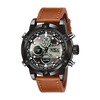
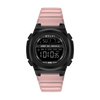
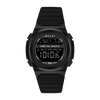
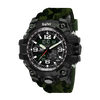
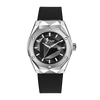
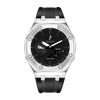
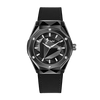
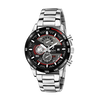
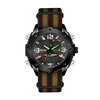
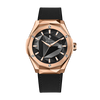
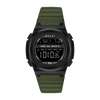
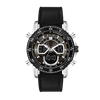
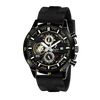
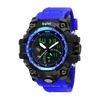
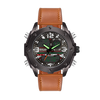
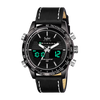
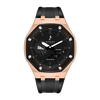
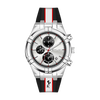
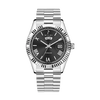
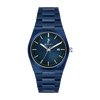
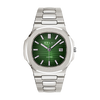
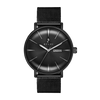
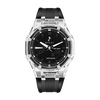
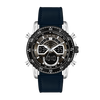
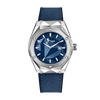
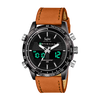


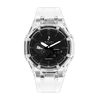
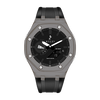
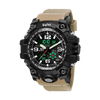
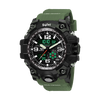
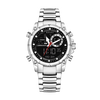
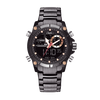
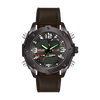
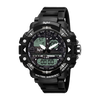









Leave a comment